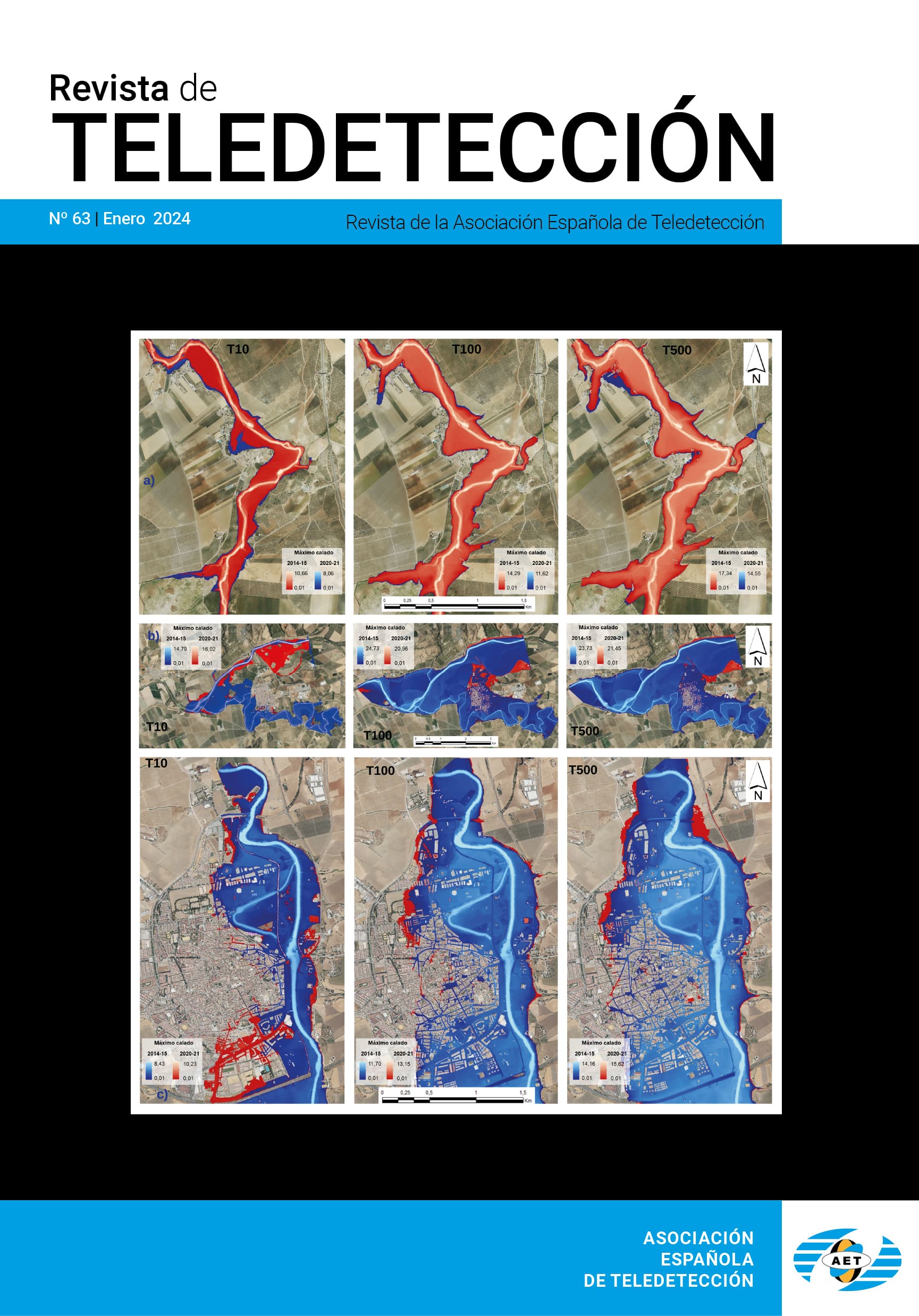Dinámica de la cobertura vegetal y los usos de la tierra a través de modelos de no-equilibrio.
A.H. Britos (ahbritos@gmail.com)
RESUMEN
Se caracterizaron los patrones espacio-temporales de la cobertura vegetal en relación con los usos del suelo, mediante el análisis de una serie temporal (1984-2010) de imágenes con valores de Índice de Vegetación de Diferencia Normalizada (NDVI) provenientes de sensores Landsat TM (Path 230, Row 81) de una porción de la cuenca de las Salinas Grandes, Chaco Árido, Argentina. Se postula que las perturbaciones de alta intensidad, tales como el desmonte con rolado frecuente, afectan la resiliencia de la vegetación y provocan el desarrollo de umbrales críticos a escala regional. La cobertura vegetal continua es reemplazada por vegetación dispersa y esto altera la dinámica de la vegetación tanto en áreas altas como bajas de la cuenca. Se utilizó el algoritmo K-Means del Programa de SIG Idrisi Taiga para agrupar 27 firmas espectrales de NDVI y sus desvíos estándar (de una ventana móvil de 5 × pixeles), en clases discretas de tendencias. Las tendencias se analizaron mediante Modelos de Regresión Lineales, Generales y Mixtos. En base a los R2 (fuerza del ajuste) y los p-valores significativos se agruparon las tendencias lineales en crecientes, decrecientes y estables. El Análisis de la Autocorrelación temporal (ACF) permitió detectar los cambios de estado. Los análisis realizados permiten postular que la disminución de NDVI, causada por la alta incidencia de desmontes con sucesivos rolados, provocan la pérdida de nutrientes y agua por escurrimiento superficial, desde las zonas más altas hacia las áreas bajas de la cuenca en las Salinas, es allí donde se produce una tendencia al aumento del NDVI, es decir, de la cobertura vegetal halófila. Tanto el seguimiento retrospectivo del índice verde como la evaluación de su respuesta, han permitido interpretar el modelo de la teoría de catástrofes. Los resultados refuerzan la idea de un salto en el modelo de histéresis y el posible desarrollo de un cambio irreversible en la escala regional.
Palabras Clave: índice de vegetación, monitoreo de bosques, teledetección, tendencias, cambio de uso del suelo, modelos de no equilibrio, Argentina.
ABSTRACT
We characterize the spatio-temporal patterns of vegetation cover in relation to land use, through analysis of time series (1984-2010) of images of Normalized Difference Vegetation Index (NDVI) from Landsat TM sensors (Path 230, Row 81) of a portion of the watershed of the Salinas Grandes, Arid Chaco, Argentina. It is postulated that high intensity disturbances, such as frequent shrub clearing with roller chopping, affects resilience vegetation and cause the developing of critical thresholds of change at a regional scale. The continuous vegetation cover is replaced by sparse vegetation, and this alters the dynamics of vegetation cover in both high and low areas of the basin. The K-Means algorithm from Idrisi Taiga software was employed in order to group, in discrete trend types, the NDVI spectral signatures of the 27 images. Characterization of the direction and strength of a trend can be accomplished with regression analysis with General and Mixed Models. For detection of thresholdsin the time series used the autocorrelation function (ACF). Local processes of major changes at the scale of the patch, and later, at the scale of the site, show a cumulative effect and end up comprising the regional scale. The analyses carried out in this work allow to postulate that decreasing NDVI, caused by high impact of brush clearing with successive roller chopping, make increase nutrient loss by runoff, from higher areas to lower areas of the basin, in the Salinas, where occurs an increasing of the NDVI, is to say of the cover halophyte vegetation. Both retrospective monitoring and assessment of the response of green vegetation index, has made it possible to interpret the catastrophe theory model. The results reinforce the idea of a jump in the Hysteresis model, and the possibility of irreversible change at the regional scale.
KEYWORDS: vegetation index, forest monitoring, remote sensing, trends, non-equilibrium models, land use change, Argentina.
PULSE AQUI PARA DESCARGAR EL ARTÍCULO COMPLETO








